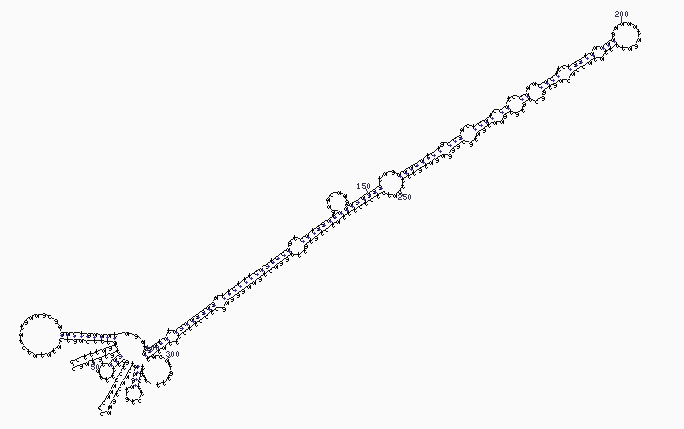miRNA as a potential biomarker for early breast cancer
One way to potentially improve long term cancer statistics is earlier detection, and in high risk patients, appropriate initiation of earlier treatment, since it is well known that the survival in stage II or III breast cancer is noticeably better than that for stage IV metastatic disease.
A critical question then, is how do we improve earlier detection?
There are a number of ways to achieve this:
- Imaging techniques
- Prognostication
- Diagnostics
- Biomarkers
Historically, breast cancer has often been picked up using classic, but rather crude, imaging techniques such as mammography and ultrasound, although both have their limitations and challenges. Biopsies are also challenging and invasive, especially in early stage disease when the tumour(s) may be very small. I’m particularly interested in biomarkers because it offers a lot of untapped near-term promise. We know that as tumours begin to develop, they leave tell tall signs and signatures – how can we develop ways to detect these earlier and with greater accuracy than at present?

Source: wikipedia
I was fascinated to read a paper in PLoSONE (open access, see references below) this morning looking at circulating microRNAs (miRNA) as a potential blood based marker for early stage breast cancer detection.
miRNA were defined by Schrauder et al., (2012) as:
“MicroRNAs (miRNAs, miRs) are a class of small, non-coding RNA molecules with relevance as regulators of gene expression thereby affecting crucial processes in cancer development.”
They were first described by Lee et al., (1993) in C. elegans (open access, see references below) and have since been found to be stable in blood, making them ideal biomarker material.
In the current research, the authors set out to determine whether miRNA could discriminate early stage breast cancer (n=48) from healthy controls (n=57) using microarray analysis.
What did the research show?
The initial results appear promising:
“We found that 59 miRNAs were differentially expressed in whole blood of early stage breast cancer patients compared to healthy controls. 13 significantly up-regulated miRNAs and 46 significantly down-regulated miRNAs in our microarray panel of 1100 miRNAs.”
Two of the miRNAs (miR-202, miR-718) were subsequently validated by RT-qPCR in an independent cohort.
What do these results mean?
I thought these results were encouraging, although it should be noted that there is no doubt that blood-based miRNA-profiling is behind the improvements seen in tissue-based miRNA-profiling. The advantage though, of blood-based profiling, is that it clearly offers:
“The potential for early, non-invasive, sensitive and specific BC detection and screening.”
Of course, there is a long way to go yet, although similar early studies have been performed in other tumour types such as lung cancer (Foss et al., 2011; Boeri et al., 2011), ovarian cancer (Häuser et al., 2010) and others.
Using miRNA as a potential biomarker for early detection is not without its challenges, though. Shrauder et al., noted that Chen et al., (2008) observed that:
“Comparing serum and blood cells from the same healthy individual an almost identical miRNA profile can be found, but in cancer patients the profiles differ.”
Other studies have not shown complete congruence in the results or findings, so it may well be a while before some clarity emerges with miRNA as a potential diagnostic, most likely with improved standardisation of sample handling, protocols, detection methods and patients (stage of disease, etc).
That said, miRNA looks to be a promising but fledgling area for biomarker research in the early detection of cancer. No doubt this field will evolve further with new and more sensitive techniques.
References:
![]() Schrauder, M., Strick, R., Schulz-Wendtland, R., Strissel, P., Kahmann, L., Loehberg, C., Lux, M., Jud, S., Hartmann, A., Hein, A., Bayer, C., Bani, M., Richter, S., Adamietz, B., Wenkel, E., Rauh, C., Beckmann, M., & Fasching, P. (2012). Circulating Micro-RNAs as Potential Blood-Based Markers for Early Stage Breast Cancer Detection PLoS ONE, 7 (1) DOI: 10.1371/journal.pone.0029770
Schrauder, M., Strick, R., Schulz-Wendtland, R., Strissel, P., Kahmann, L., Loehberg, C., Lux, M., Jud, S., Hartmann, A., Hein, A., Bayer, C., Bani, M., Richter, S., Adamietz, B., Wenkel, E., Rauh, C., Beckmann, M., & Fasching, P. (2012). Circulating Micro-RNAs as Potential Blood-Based Markers for Early Stage Breast Cancer Detection PLoS ONE, 7 (1) DOI: 10.1371/journal.pone.0029770
Lee, R., Feinbaum, R., & Ambros, V. (1993). The C. elegans heterochronic gene lin-4 encodes small RNAs with antisense complementarity to lin-14 Cell, 75 (5), 843-854 DOI: 10.1016/0092-8674(93)90529-Y
Foss KM, Sima C, Ugolini D, Neri M, Allen KE, & Weiss GJ (2011). miR-1254 and miR-574-5p: serum-based microRNA biomarkers for early-stage non-small cell lung cancer. Journal of thoracic oncology : official publication of the International Association for the Study of Lung Cancer, 6 (3), 482-8 PMID: 21258252
Boeri M, Verri C, Conte D, Roz L, Modena P, Facchinetti F, Calabrò E, Croce CM, Pastorino U, & Sozzi G (2011). MicroRNA signatures in tissues and plasma predict development and prognosis of computed tomography detected lung cancer. Proceedings of the National Academy of Sciences of the United States of America, 108 (9), 3713-8 PMID: 21300873
Häusler, S., Keller, A., Chandran, P., Ziegler, K., Zipp, K., Heuer, S., Krockenberger, M., Engel, J., Hönig, A., Scheffler, M., Dietl, J., & Wischhusen, J. (2010). Whole blood-derived miRNA profiles as potential new tools for ovarian cancer screening British Journal of Cancer, 103 (5), 693-700 DOI: 10.1038/sj.bjc.6605833
3 Responses to “miRNA as a potential biomarker for early breast cancer”
Hello
Since it is about miRMA, the title should “miRNA as a potential biomarker for early breast cancer”.
Fred
Ack, good catch Fred. I was reading a bunch of RNAi papers just before the miRNA paper – Freudian slip!
[…] Church, Ph.D on Pharma Strategy Blog recently wrote about how microRNA (miRNA) can be used as a potential biomarker in breast cancer, allowing for earlier […]
Comments are closed.